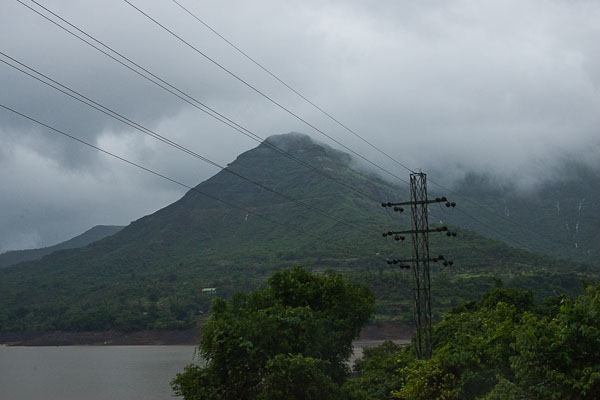Energy Efficiency & Green Power
Leaders are visionaries. They show us their vision and lead us towards the Promised Land. Or atleast, they used to lead us till leadership became the domain of dynasties. In India, the former Prime Minister, Shri Atal Bihari Vajpaee was initially ridiculed when he unveiled his Golden Quadrilateral and East-West, North-South corridor dreams. With the success of the Golden Quadrilateral, every political party in India has understood the power of those grand dreams. Unfortunately, those grand dreams are limited to infrastructure projects and today the motto is �the bigger, the better�.
It is now an established fact that Energy is a great enabler in reducing poverty, and enhancing equity among the masses. It is also a prerequisite for India�s emergence as an Industrialised Nation. At a time when India is inviting foreign investment with open arms, the deficit of electricity has become more pertinent and is threatening to become the spoilsport. The response to this deficit is to think of mega power projects, which is in line with the current accepted wisdom: of big being better. However, the question is whether big is always better?
India currently has about 1.8 lakh Megawatts of power generation capacity. The transmission losses are about 30%. This amounts to 60,000 mega watts of power ie. Equivalent to 15 Ultra mega power projects of 4000 MW size each. If we consider that each MW of capacity creation costs about 4 crores of rupees, the total amount saved can run upto 240,000 crores. A leaking ship requires the hole to be plugged rather than thinking of building another ship. Unfortunately, the proponent of this simple truth is likely to be branded as anti-development and thus anti-people and the opinion would be trashed with impunity.
These mega power projects leave a huge environmental foot print. Each power plant requires several thousand acres of land. Since Relocation and Rehabilitiation is an issue, the proponents of these power projects mostly try to acquire wetlands that are breeding grounds of hundreds of bird species, flora and fauna. Typically these places are termed as wastelands and commandeered for setting up these mega projects. This means the mega power plants are situated at a great distance from the consuming centres. So the vicious cycle of power generation, transmission losses during wheeling over long distances, distribution losses starts yet again.
History is replete with instances of civilisations perishing due to the fury of Nature. From the earliest days of mankind, we have understood the powers of Nature and have revered it. We have worshipped the wind, the fire, the water, the sun, earth etc from time immemorial. Unfortunately, today we are at a cross purpose with nature. The powers to be of India�s belated march towards industrialisation have closed their eyes towards the impact on nature. It is time that we wake up to such realisms, and think of securing our future generations by planning for a greener outlook.
The use of non-conventional energy sources like solar, wind, biomass etc. can decrease the dependence on present and future demand of electricity from mega power projects. Furthermore, these non-conventional energy sources can be tapped to light up homes of various rural communities that either are off the grid supply now or have irregular power supply. Supplying power to these far-flung communities also increases the losses. When one considers that India has about 6 lakh villages, establishing a grid network to connect all the far flung villages is a gigantic task & costly task. It is better to design a system where some of the remote villages are off the grid but have tap renewable energy sources for their energy needs.
India is blessed with abundant supply of sunshine as opposed to countries in Europe. Therefore, it is vital that we tap solar energy to fulfill our energy needs. Far-flung rural communities can be provided with a combination of solar energy generating systems and households connected to a mini grids; thus enabling their de-hyphenation from major power grid. The energy thus generated can be used by the community while the excess energy generated can recharge the batteries.
At the moment, solar energy appears to be costlier than the thermal or hydel power and critics are ready to dismiss usage of solar power as an elitist dream. Is that so?
In India the production capacity for Photo Voltaic Cells is about 200 MW. However, the domestic demand is hardly 10 MW. So about 180 MW is being exported. Considering that most of these are used in Europe where the average sunlight is less than that in India, we need to think why we don�t find any cost advantage in Solar energy. The answer is the hidden subsidies and the flawed way of calculations. The unit cost of power for a consumer is same whether the consumer is near the generating station or whether he is in a remote location. The cost of providing power to farflung communities are hidden in this pricing mechanism. When one considers the transmission losses incurred to connect far flung houses, the solar appears to be cheaper.
Increased or mandatory usage in certain designated areas is likely to lead to greater economies of scale. The Government of India can make an amendement to the Electricity policy to mandate the distribution utilities to purchase a specific portion of their energy needs from renewable energy sources. This would give a boost to the generation and consumption of renewable energy sources in India. Furthermore, allowing renewable power plants to sell part of their capacities as per rates applicable to Unscheduled Interchange will make the cost of solar energy look attractive in India. It would also help if the Government channelises its efforts in ensuring more R&D in this area keeping the longterm in mind.
The Government of India needs to increase the efficiency of the existing power transmission and fully harness the potential of alternate energy resources rather than waste lakhs of crores of rupees in creating new conventional power generating souces. It is not only a colossal waste of scare resourses, but also creates a huge environmental footprint burdening future generations.
Please post your comments and feedback about the article ‘Energy Efficiency & Green Power’.
- Endangered Wild Buffalo of Kaziranga - 4 July,2024
- Leopards: The Last Stand Trailer 2 - 1 July,2024
- GoPro Hero 12 Black - 6 September,2023






